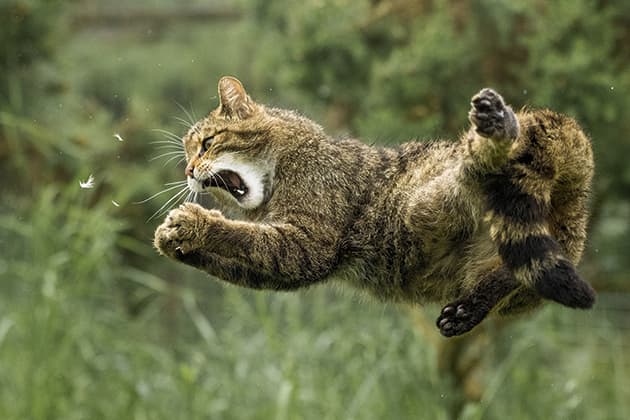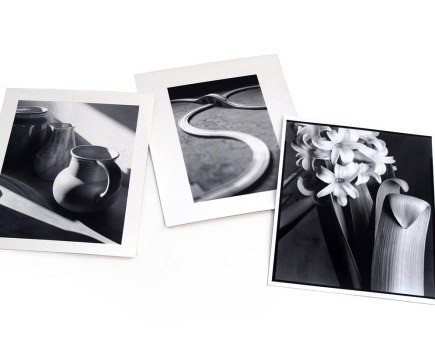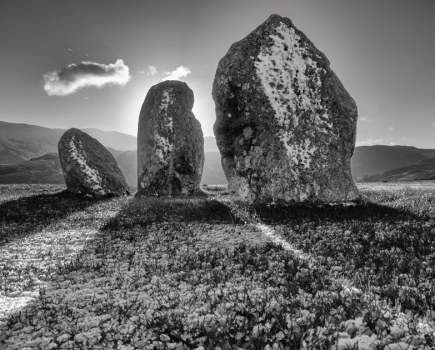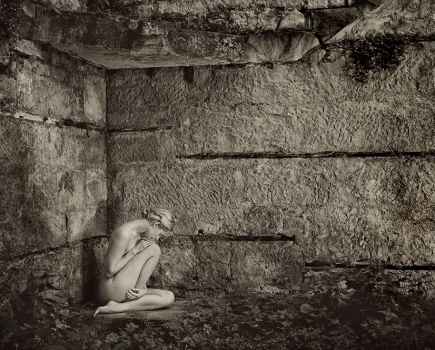Under what circumstances do you find yourself working in low-light conditions? It’s something that’s particularly prevalent in your book Back Garden Safari.
My need for low-light shooting depends on whether I am working with a camera trap or find myself at the mercy of the weather during daylight hours. Camera-trap work, for example, often requires taking photos when there is virtually no ambient light in order to capture photos of animals that are very active at night.
At the other end of the scale, shooting in heavily overcast daylight, especially at sunrise or sunset, or even in average light but when a high shutter speed is required, can introduce challenges that need to be compensated with aperture, shutter and ISO variations. The desired end result will dictate which approach I take, but one thing I always keep in mind is that low light doesn’t have to mean it’s automatically time to pack away the camera.
How do you tackle the issue of focusing in low light? Is it trickier to use autofocus in such circumstances?
Of course the degree of what is considered low light can vary, but one thing is a given – this type of light reduces contrast and, because autofocus systems rely on contrast to work, this can trip your DSLR up and cause the focus to hunt. This is not too much of a concern with camera trapping because you would prefocus the camera and then set it to manual so it doesn’t change.
However, when shooting in low daylight, I often use the more sensitive single point focus sensors rather than group modes. Another trick I like to deploy if I’m using a teleconverter, which also reduces the focus sensitivity even more, is to prefocus manually on the subject before engaging the autofocus. This manual assistance can often be just enough to help the camera acquire focus lock.
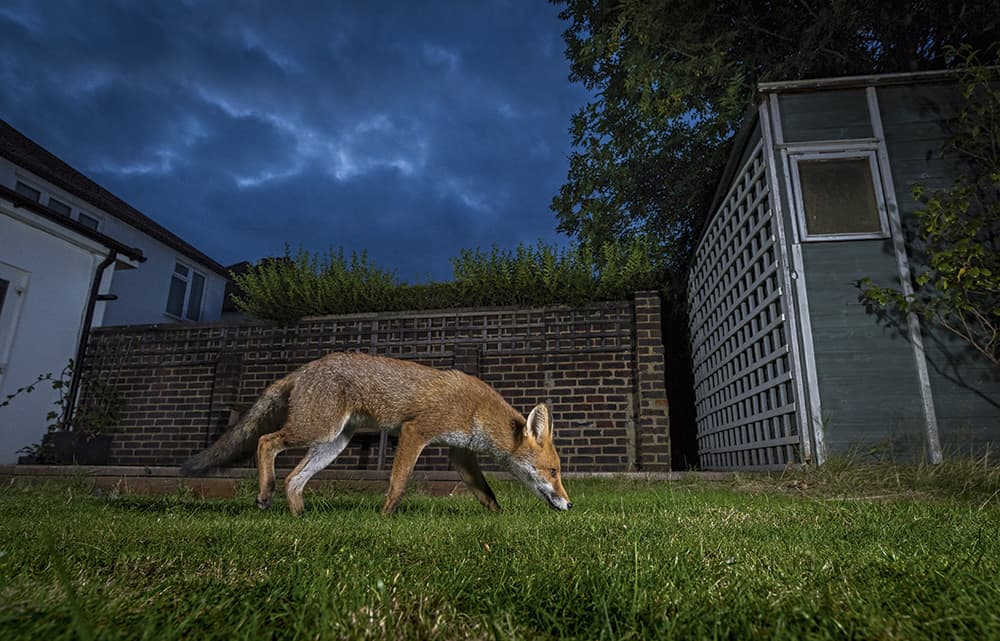
A fox stalks during dusk. Nikon D810, 18-35mm, 1/125sec at f/8, ISO 640 2x Nikon speedlights
Which camera are you using at the moment that is able to deal with such lighting conditions?
DSLRs are getting better all the time at working in less-than-ideal conditions, but currently my main camera bodies are two Nikon D810s, which have very good low-light autofocus capabilities, plus a recently added Nikon D500 that has some of the best autofocus capabilities of any camera on the market. I’ve used a D5 and while it’s a phenomenal bit of kit, my style of shooting finds the detachable gripped bodies more flexible, especially when using as a camera trap. I often need to have as small and quiet a camera as possible in those situations. The focus sensitivity of all three of my cameras also means focus remains more accurate when teleconverters are added to my 400mm lens. In the case of the D500, it retains very sensitive cross-type focus points right at the edge of the frame, which can help aid composition in low contrast.
In these conditions, it’s likely that you’ll use fairly high ISOs. Is this a problem in terms of noise or dynamic range?
It’s actually quite incredible just how good sensor technology has become in recent years. Even entry-level DSLRs have native ISO ranges that can go into five figures but despite this, I still always strive to keep the ISO as low as possible. On a D5, I’ve used ISO 30,000+ and seen incredible results in the right conditions. But as a general rule of thumb, regardless of the camera I’m using, I try to limit my ISO to one or two stops below its native maximum.
Image-editing software such as Lightroom has helped considerably, though, as alongside improvements in sensor quality, noise reduction is getting better and better, too, so we’re definitely a lot more spoilt now than ever before with regards to being able to shoot in darker environments.
The bigger issue to consider is the drop-off in dynamic range and image sharpness. As the ISO levels creep up, both of those aspects deteriorate. This can make it harder to recover and retain details in deep shadows, so there’s always a trade-off, even with technology as good as it is today. The important thing is to learn the limitations of the camera and try to work within those boundaries, but equally don’t be afraid to push them whenever needed. You also lose a couple of stops of noise when printing, so I tend not to get too worried about how a high-ISO image looks when viewed at 100% on my computer screen. Instead, I concentrate more on making sure the content of the photo is as appealing as possible.
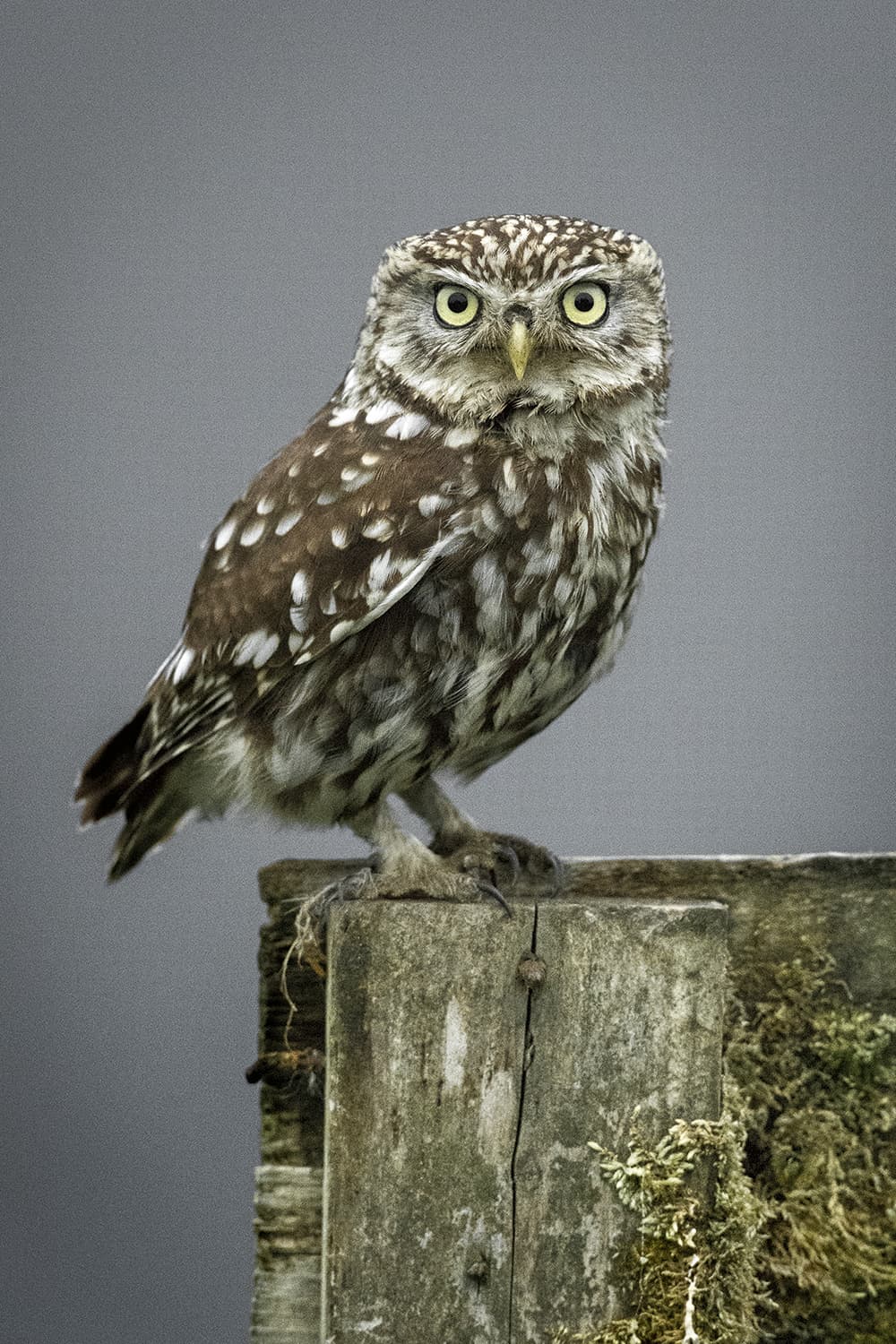
Exploring the low-light capabilities of the Nikon D5. Nikon D5, 400mm, 1/1250sec at f/8, ISO 28,800
What about flash? Is this something you tend to use?
Introducing off-camera flash is a very good way to make working in low light a more favourable experience. Care should always be taken when working with flashguns and wildlife by using aperture and ISO to adjust the DSLR’s sensitivity to light rather than using the flash at full power. By mastering this technique and having more control over the light sources in your image, you can really help your photos ‘pop’. Using off-camera flash in low daylight enables you to emphasise that low ambient light and use flash to keep the subject illuminated or, at night, it can allow you to freeze the motion of your subject, even during exposures of 30 seconds.
As well as being a Nikon Ambassador, Richard Peters’ work has also been recognised twice in the Wildlife Photographer of the Year as well as seeing him named the European Wildlife Photographer of the Year 2015. Richard runs workshops at home and abroad as well having written his own eBook, Back Garden Safari. www.richardpeters.co.uk

